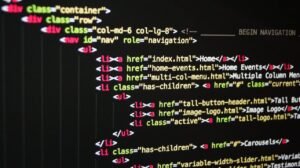Deep Learning History
Deep learning, a branch of artificial intelligence (AI), has seen significant advancements in recent years. This technology has revolutionized various fields, from voice recognition to image classification, and has become a crucial tool in solving complex problems. Understanding the history of deep learning allows us to appreciate its evolution and gain insights into its future potential.
Key Takeaways
- Deep learning is a branch of AI that has transformed various industries.
- Advancements in deep learning have led to significant breakthroughs in voice recognition and image classification.
- Understanding the history of deep learning helps in predicting its future potential and applications.
The Birth of Artificial Neural Networks
Although deep learning gained popularity in recent years, the concept of artificial neural networks (ANNs) was introduced in the 1940s. ANNs were inspired by the structure and function of the human brain, with interconnected nodes or “neurons” that can process and transmit information. However, due to limited computational power, ANNs could not reach their full potential at the time. *
The Emergence of Deep Learning
In the early 2000s, deep learning experienced a resurgence with the introduction of *deep neural networks (DNNs)*. DNNs have multiple layers of interconnected nodes, allowing them to learn hierarchical representations of data. This breakthrough, combined with the increasing availability of data and advancements in computing power, paved the way for the rapid progress of deep learning algorithms.
Key Milestones in Deep Learning
| Year | Milestone |
|---|---|
| 2012 | *AlexNet* wins the ImageNet Large Scale Visual Recognition Challenge, boosting interest in deep learning. |
| 2014 | *Google’s DeepMind* develops AlphaGo, an AI program that defeats a human Go world champion. |
| 2018 | *OpenAI’s Dota 2* bot defeats professional players in an eSports tournament, demonstrating deep learning capabilities in complex games. |
Deep Learning Applications
Deep learning has found applications in various fields, including:
- **Natural Language Processing (NLP)**: Deep learning models have significantly improved machine translation, sentiment analysis, and chatbot interactions.
- **Computer Vision**: Deep neural networks have revolutionized image and object recognition, enabling applications such as autonomous vehicles and medical imaging diagnostics.
- **Speech Recognition**: Deep learning algorithms power voice assistants like Siri and Alexa, allowing for efficient voice commands and natural language understanding.
Deep Learning in the Future
As deep learning continues to advance, its potential applications seem boundless. Researchers are actively exploring ways to improve deep learning models, reduce computational requirements, and expand their applicability to various industries. With the ongoing developments in hardware and data availability, the future of deep learning holds immense promise.
Conclusion
Understanding the history of deep learning provides valuable insights into its transformative journey and its potential for future applications. From its early beginnings as artificial neural networks to its current advancements in various fields, deep learning has revolutionized the world of AI. As technology continues to advance, deep learning is set to play a key role in solving complex problems and driving innovation in multiple industries.

Common Misconceptions
Deep Learning History
Deep learning, a subfield of artificial intelligence, has a rich and complex history that is often misinterpreted or misunderstood. To clarify some common misconceptions, let’s delve into three key aspects:
- Misconception 1: Deep learning is a recent development in the field of AI.
- Misconception 2: Deep learning is only applicable to computer vision tasks.
- Misconception 3: Deep learning models learn in the same way as the human brain.
Origins of Deep Learning
Contrary to popular belief, deep learning is not a recent advancement. It traces its roots back to the 1940s and 1950s when researchers began working on artificial neural networks and the concept of deep architectures. Some crucial points to consider include:
- Misconception 1: Deep learning started with the advent of powerful computers.
- Misconception 2: The idea of deep architectures was abandoned in favor of shallow networks.
- Misconception 3: Deep learning breakthroughs occurred only in the 21st century.
Applications Beyond Computer Vision
While deep learning has indeed demonstrated remarkable achievements in computer vision tasks, it is not limited to this domain alone. The field has made significant contributions to various other areas, such as:
- Misconception 1: Deep learning has no impact on natural language processing.
- Misconception 2: Deep learning is not relevant for healthcare or drug discovery.
- Misconception 3: Deep learning cannot be used for autonomous driving systems.
Deep Learning vs. Human Brain
Although deep learning models are inspired by the behavior of neurons in the human brain, there are fundamental differences in the learning processes. It is essential to clarify these misconceptions:
- Misconception 1: Deep learning models possess human-like understanding.
- Misconception 2: Human brains use gradient descent for learning, like deep learning.
- Misconception 3: Deep learning can replicate the complexities of the human brain.

Deep Learning: A Brief Overview
Deep learning is a subfield of machine learning that is based on artificial neural networks, inspired by the functioning of the human brain. It has revolutionized various fields, including computer vision, natural language processing, and speech recognition. In this article, we explore the history of deep learning through ten intriguing tables, showcasing key milestones, influential researchers, and breakthroughs.
Milestones in Deep Learning
The following table highlights some of the major milestones in the development of deep learning.
| Date | Milestone |
|---|---|
| 1943 | McCulloch-Pitts neuron model |
| 1956 | Dartmouth Workshop: Introduction of AI as a field of study |
| 1980 | Backpropagation algorithm introduced |
| 2012 | AlexNet achieves record-breaking performance in ImageNet competition |
| 2014 | Google’s DeepMind beats human Go champion |
| 2020 | GPT-3, a language model with 175 billion parameters, is released |
Key Figures in Deep Learning
This table showcases some prominent researchers who have made significant contributions to the field of deep learning.
| Name | Contributions |
|---|---|
| Geoffrey Hinton | Introduced backpropagation, deep belief networks |
| Yann LeCun | Worked on convolutional neural networks (CNNs) |
| Andrew Ng | Co-developed DeepLearning.ai, popularized deep learning |
| Fei-Fei Li | Contributed to ImageNet, promoted visual recognition research |
| Yoshua Bengio | Pioneered research on recurrent neural networks (RNNs) |
Applications of Deep Learning
The table below illustrates some real-world applications that have been transformed by deep learning techniques.
| Domain | Applications |
|---|---|
| Medical | Automated disease diagnosis, medical imaging analysis |
| Robotics | Object recognition, autonomous navigation |
| Finance | Stock market prediction, fraud detection |
| Transportation | Self-driving cars, traffic prediction |
| Entertainment | Recommendation systems, emotion recognition |
Deep Learning Frameworks
The following table presents popular deep learning frameworks that researchers and practitioners leverage for their projects.
| Framework | Main Features |
|---|---|
| TensorFlow | Large community, extensive documentation |
| PyTorch | Dynamic computational graphs, ease of use |
| Keras | User-friendly, high-level abstraction |
| Caffe | Efficient for computer vision applications |
| Theano | Optimized for mathematical operations |
Deep Learning Hardware
This table highlights some specialized hardware that has been developed to accelerate deep learning tasks.
| Hardware | Main Features |
|---|---|
| Graphics Processing Units (GPUs) | Parallel computing, matrix operations |
| Tensor Processing Units (TPUs) | Designed explicitly for deep learning workloads |
| Field-Programmable Gate Arrays (FPGAs) | Versatile and customizable architecture |
| Application-Specific Integrated Circuits (ASICs) | Efficiency and performance optimization |
Limitations and Challenges
This table explores some of the limitations and challenges faced in the field of deep learning.
| Challenge | Description |
|---|---|
| Data Size | Deep learning often requires vast amounts of labeled data |
| Interpretability | Understanding the decision-making process of deep models |
| Computational Requirements | Training deep networks can be computationally expensive |
| Biases in Data | Data may contain biases leading to unfair or discriminatory predictions |
Deep Learning in Popular Culture
The table below presents instances where deep learning techniques have influenced popular culture.
| Domain | Examples |
|---|---|
| Art | Generative adversarial networks (GANs) producing AI-generated art |
| Music | Deep learning used to compose music or generate lyrics |
| Film | Visual effects enhanced through deep learning algorithms |
| Gaming | AI agents using deep learning techniques to learn and compete |
The Future of Deep Learning
With continuous advancements and ongoing research, the future of deep learning holds immense potential. As deep learning techniques continue to evolve, we can expect further breakthroughs in areas such as explainable AI, reinforcement learning, and ethical considerations surrounding AI applications.
In conclusion, deep learning has come a long way since its inception, propelling the field of AI to new heights. As the tables showcased, researchers, frameworks, and applications have played vital roles in shaping its history. Deep learning’s impact reaches beyond technological advancement, transcending into popular culture and igniting creativity across various domains. While challenges persist, the future of deep learning looks promising, with opportunities for transformative innovation.
Frequently Asked Questions
What is the history of deep learning?
Q: When did deep learning start?
Deep learning originated in the 1940s and 1950s when researchers started exploring artificial neural networks as a way to mimic the human brain’s functioning. However, the field gained more attention and significant progress was made in the 2000s due to the availability of large data sets and more powerful computational resources.
Q: Who are the pioneers of deep learning?
Some of the key pioneers in deep learning include Geoffrey Hinton, Yann LeCun, and Yoshua Bengio. They have made substantial contributions to the field, developing algorithms, architectures, and training techniques that form the foundation of modern deep learning systems.
Q: What were the early applications of deep learning?
In the early days, deep learning was primarily used in pattern recognition tasks such as speech and image recognition. These applications showcased the ability of deep learning models to extract meaningful features from raw data and make accurate predictions.
Q: How has deep learning advanced over time?
Deep learning has witnessed significant advancements over the years. These include the introduction of convolutional neural networks (CNNs) for image analysis, recurrent neural networks (RNNs) for sequence modeling, and the development of attention mechanisms that enhance the models’ ability to focus on important features. Additionally, the availability of larger datasets and more powerful hardware has fueled progress in training deeper and more complex architectures.
What are the recent developments in deep learning?
Q: What is transfer learning in deep learning?
Transfer learning is a recent development in deep learning that allows pre-trained models to be used as a starting point for solving new tasks. By transferring the knowledge gained from training on a large dataset to a related but different problem, transfer learning significantly reduces the time and resources required for training new models.
Q: What is deep reinforcement learning?
Deep reinforcement learning combines deep learning techniques with reinforcement learning algorithms. It enables machines to learn how to make decisions based on rewards and punishments received from the environment, allowing them to autonomously learn complex and adaptive behaviors.
Q: What are generative adversarial networks (GANs)?
GANs are a class of deep learning models that consist of two neural networks: a generator and a discriminator. The generator tries to generate realistic samples from random noise, while the discriminator tries to distinguish between real and fake samples. Through competition, GANs learn to generate high-quality, realistic data such as images, audio, or text.
Q: How is deep learning applied in natural language processing (NLP)?
Deep learning has revolutionized natural language processing by introducing models such as Long Short-Term Memory (LSTM) networks and Transformer models. These models excel at tasks like language translation, sentiment analysis, and text generation by effectively capturing complex patterns and contextual dependencies in text.




